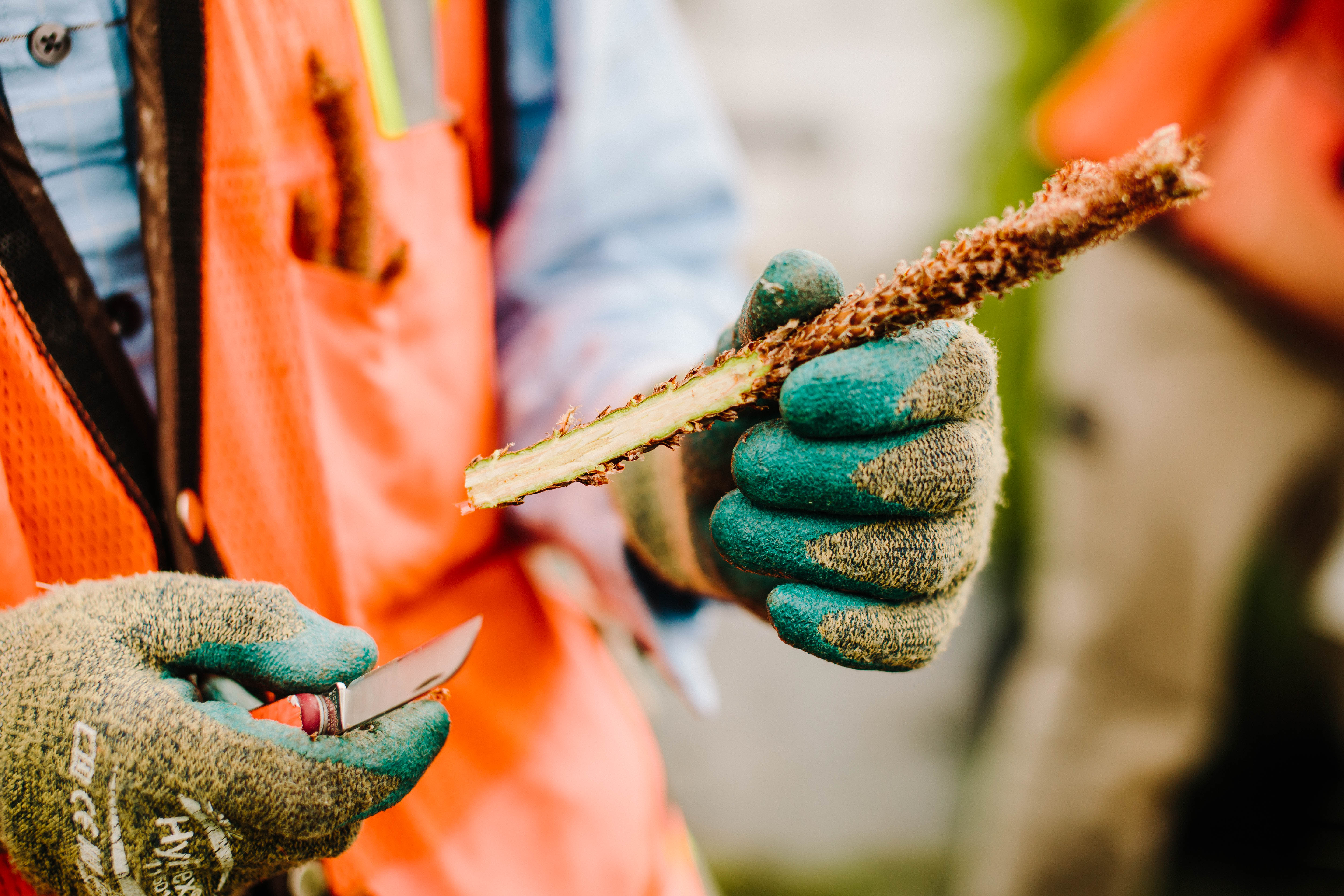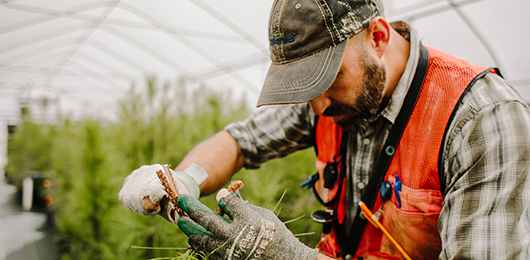Research & Breeding
Grafting
Grafting fuses one tree with another in order to allow the younger tree to behave as though it were the age of the older tree. Rather than waiting for a new seedling to mature to seed-producing age (about 7 years old) researchers use this technique in order to jump years ahead in their studies of a promising tree family.
There are two main types of grafting:
- Top grafting, done with tall, older trees using a hydraulic lift to reach the treetops. This type of grafting produces cones the most quickly and is used when researchers are testing which tree families will be the best performers.
- Container or pot grafting, done with trees that have growing for a few years in a container rather than the ground. After researchers select the ideal trees through top grafting, they use pot grafting to establish a whole lot of these trees in a short period of time. The container trees are then planted in a seed orchard, where their pinecones will produce millions of seeds.






